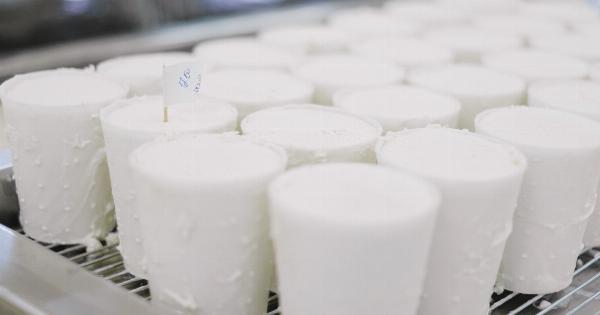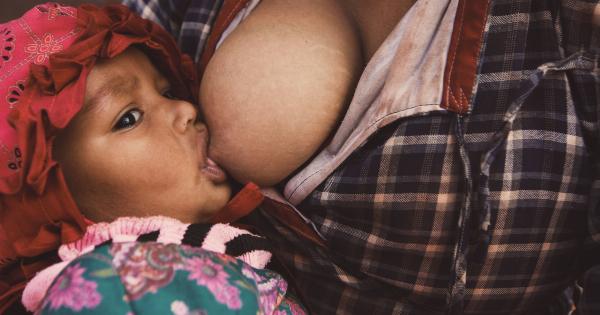Breastfeeding is a beautiful and rewarding experience for both mom and baby. However, it can also come with its fair share of challenges. One such challenge is mastitis, a painful infection that affects the breast tissue.
Mastitis can leave you feeling exhausted, causing discomfort and hindering your ability to breastfeed. But fear not, with proper knowledge and preventive measures, you can minimize the risk of developing mastitis and ensure a smooth breastfeeding journey.
In this comprehensive guide, we will explore various strategies to prevent mastitis during your breastfeeding journey.
Understanding Mastitis
Mastitis is an inflammation of the breast tissue, often caused by bacteria entering the breast through cracked or damaged nipples.
Common symptoms of mastitis include a painful, swollen, and red breast, along with flu-like symptoms such as fever and chills. While mastitis can be unpleasant, it is important to remember that it is treatable and does not mean the end of breastfeeding.
Maintain Proper Breastfeeding Technique
One of the key ways to prevent mastitis is by ensuring a correct breastfeeding technique. Improper positioning and latching can lead to nipple damage, providing an entry point for bacteria.
Here are some tips for maintaining proper breastfeeding technique:.
- Hold your baby in a way that aligns their body with yours, ensuring their mouth is facing your nipple.
- Allow your baby to open their mouth wide before latching on, aiming for a deep latch.
- Ensure your baby’s nose and chin are touching your breast, with their lips flanged outwards.
- Opt for different feeding positions to minimize pressure on specific areas of the breast.
Establish a Consistent Nursing Schedule
Creating a consistent nursing schedule can help prevent engorgement, a common precursor to mastitis. When your breasts become overly full and engorged, it can lead to blocked milk ducts and increase the likelihood of developing mastitis.
Here’s how you can establish a consistent nursing schedule:.
- Feeding on demand: Watch for hunger cues in your baby, such as smacking lips or putting hands in their mouth.
- Aim for at least eight nursing sessions per day in the first few weeks.
- If your baby is not waking up for feeds, gently wake them to ensure regular nursing.
- Avoid long breaks between nursing sessions, especially in the early days of breastfeeding.
Take Care of Your Breasts
Proper breast care is crucial in preventing mastitis. By keeping your breasts clean and promoting healthy milk flow, you can minimize the risk of infection. Consider the following tips:.
- Gently wash your breasts with warm water and mild soap, avoiding harsh chemicals that may cause dryness.
- Keep your nipples dry between feedings to prevent excess moisture that can lead to bacterial growth.
- Avoid using harsh soaps or lotions on your nipples, as they can cause irritation.
- If you have cracked or sore nipples, consult a lactation consultant for guidance on appropriate nipple care.
Ensure Adequate Milk Removal
Avoiding milk stasis is essential in preventing mastitis. When milk remains stagnant in the breasts, it can lead to blockages and infection. Proper milk removal plays a crucial role in maintaining a healthy breastfeeding relationship.
Consider the following tips:.
- Ensure your baby is effectively emptying each breast during feeding.
- If your baby is unable to remove milk adequately, consider using a breast pump to express milk after nursing.
- If you are exclusively pumping, establish a regular pumping schedule to maintain milk flow.
- Avoid tight-fitting bras or clothing that compresses your breasts, as it can impede proper milk flow.
Address Engorgement and Blocked Milk Ducts Promptly
Even with the best preventive measures, engorgement and blocked milk ducts can still occur. It is vital to address these issues promptly to prevent the development of mastitis. Here’s what you can do:.
- Apply warm compresses or take a warm shower before nursing to help alleviate engorgement.
- Gently massage your breasts towards the nipple while nursing to help release blocked milk ducts.
- Utilize hand expression or a breast pump to relieve engorgement if your baby is unable to latch.
- If symptoms of mastitis persist, consult a healthcare professional for further guidance and potential treatment.
Practice Good Hygiene
Maintaining good hygiene is crucial in preventing the spread of bacteria that can lead to mastitis. Consider the following hygiene practices:.
- Wash your hands thoroughly before each nursing session to minimize the transfer of bacteria.
- Regularly wash and sterilize breast pump parts to prevent the growth of harmful bacteria.
- Change breast pads frequently, especially if they become damp or soiled.
- Avoid using cracked or damaged breast pump parts that may harbor bacteria.
Take Care of Yourself
Moms often prioritize the needs of their baby over their own, but self-care is equally important during breastfeeding. Taking care of yourself can have a positive impact on your overall breastfeeding experience and minimize the risk of mastitis.
Consider the following self-care tips:.
- Get adequate rest and sleep whenever possible to support your body’s immune system.
- Eat a nutritious diet, rich in fruits, vegetables, whole grains, and lean proteins.
- Stay hydrated by drinking plenty of water throughout the day.
- Avoid excessive stress and seek support from your partner, friends, and family.
Seek Professional Help and Support
If you have concerns about mastitis or need additional guidance, do not hesitate to seek professional help.
Lactation consultants, healthcare providers, and breastfeeding support groups can provide valuable advice and support throughout your breastfeeding journey. Remember, you are not alone, and reaching out for help is a sign of strength.
By following these preventive measures and seeking appropriate care when needed, you can significantly reduce the risk of mastitis and ensure a positive and fulfilling breastfeeding journey for both you and your baby. Happy breastfeeding!.


























